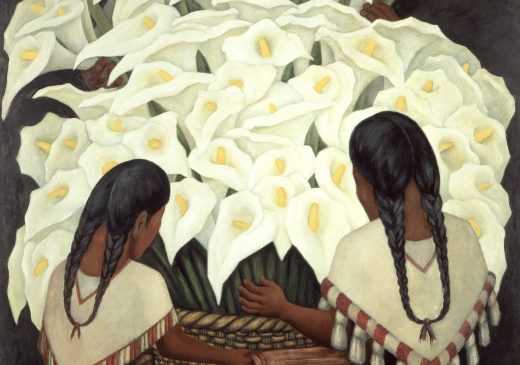Rivera became one of the most esteemed figures in Mexican modernism through his contributions to developing the nation’s visual culture in the first half of the twentieth century. After a decade studying art in Europe, he returned to Mexico and worked for several government-funded cultural programs, which included his first mural commission—an undertaking that catapulted his career. Rivera painted several ambitious mural cycles in Mexico and quickly established himself as the painter of choice for the Mexican government.
By the late 1920s, however, political conflicts largely ended new commissions of public murals in Mexico, so Rivera traveled to the United States in 1930, where he created large murals in San Francisco, Detroit, and New York. After returning to Mexico in 1933, he entered a slower period of productivity, focusing on private commissions and paintings suffused with mexicanidad. The resulting works both popularized and elevated Mexican art throughout the world.
Diego María de la Concepción Juan Nepomuceno Estanislao de la Rivera y Barrientos Acosta y Rodríguez (Spanish pronunciation: [ˈdjeɣo riˈβeɾa]; December 8, 1886 – November 24, 1957) was a Mexican painter. His large frescoes helped establish the mural movement in Mexican and international art.
Between 1922 and 1953, Rivera painted murals in, among other places, Mexico City, Chapingo, and Cuernavaca, Mexico; and San Francisco, Detroit, and New York City. In 1931, a retrospective exhibition of his works was held at the Museum of Modern Art in Manhattan, shortly before Rivera's commencement of his 27-mural series known as Detroit Industry Murals the next year.
Rivera had four wives and numerous children, including at least one illegitimate daughter. His first child and only son died at the age of two. His third wife was fellow Mexican artist Frida Kahlo, with whom he had a volatile relationship that continued until her death. His previous two marriages, ending in divorce, were respectively to a fellow artist and a novelist, and his final marriage was to his agent.
Due to his importance in the country's art history, the government of Mexico declared Rivera's works as monumentos históricos. Rivera holds the record for highest price at auction for a work by a Latin American artist. The 1931 painting The Rivals, part of the record-setting collection of Peggy Rockefeller and David Rockefeller, sold for US$9.76 million at a 2018 Christie's auction.


